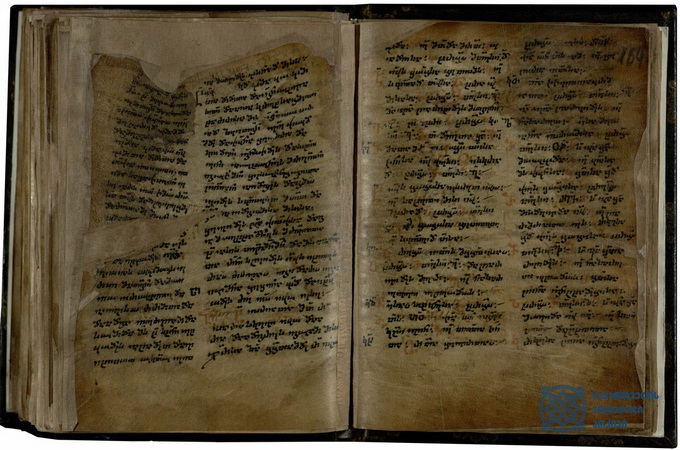Ancient Georgian Gospel could be added to UNESCO heritage list

The scientists discovered more ancient layers of text underneath that presently visible. It turns out the text is a palimpsest, meaning each line of Scripture was erased and retraced in newer layers.
The oldest text has been dated to the ninth-tenth centuries.
The manuscript has been submitted and is currently under review for entry into the “Memory of the World” international UNESCO register. The program was established in 1992 for the protection of the world’s documentary heritage.
The new study of the parchment discovered three layers to the text. The two top layers are in the Nuskhuri script which first appeared in the ninth century, and the third in the Asomtavruli script, which is the oldest Georgian script, dating to at least the fifth century. Both scripts are used exclusively by the Georgian Orthodox Church.
The Gospel came to the National Museum of Georgia in 1924 from the Church of the Mother of God in the village of Tortiza in the Gori region, fifty-six miles northwest of Tbilisi. In older descriptions of the manuscript it is spoken of as from the fourteenth century, but researchers have found evidence from the ninth-tenth centuries, twelfth-thirteenth, fourteenth, and sixteenth-seventeenth centuries.
The two upper layers are copies of the Gospel of one of Georgia’s most venerated saints, George Mtatsmindeli, also known as George of Iveron and George the Athonite (1009-1065). He was a Georgian monk and author of spiritual texts and translated several editions of the Bible into Georgia, serving as a link between Georgia and Byzantium.
Scientists are still working to identify the third layer.
The project on new descriptions of manuscripts started in Georgian National Archives in 2014. Its purpose is to update the data of thousands of manuscripts in the archive. As part of the project in 2016 it has been published description of a hundred manuscripts. Now specialists are working on the second volume of descriptions.
0
0
If you notice an error, select the required text and press Ctrl+Enter or Submit an error to report it to the editors.
Read also

U.S. lobby for Ukraine calls rallies in defense of UOC a risk – source
18 December 21:28

Relics of Job and Amphilochius brought from Pochaiv to Khmelnytskyi
18 December 21:03

In Cherkasy, city council transfers land under seized cathedral to OCU
18 December 20:29








